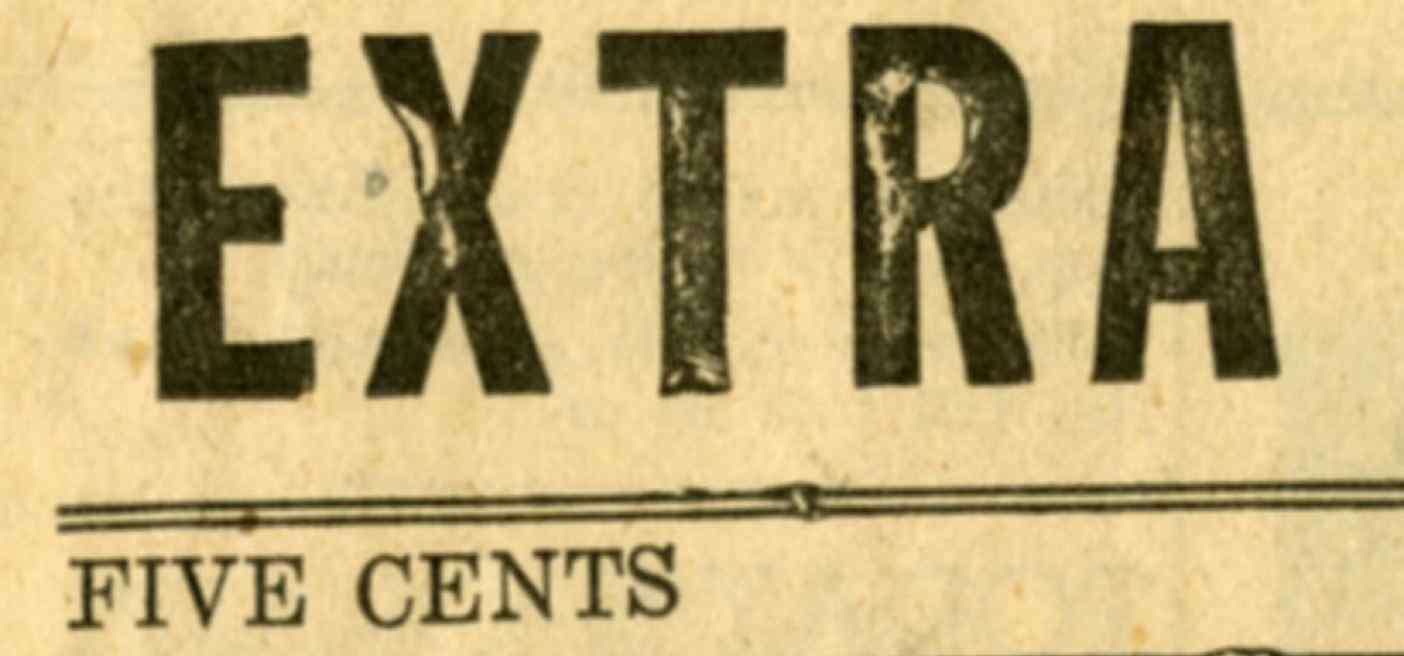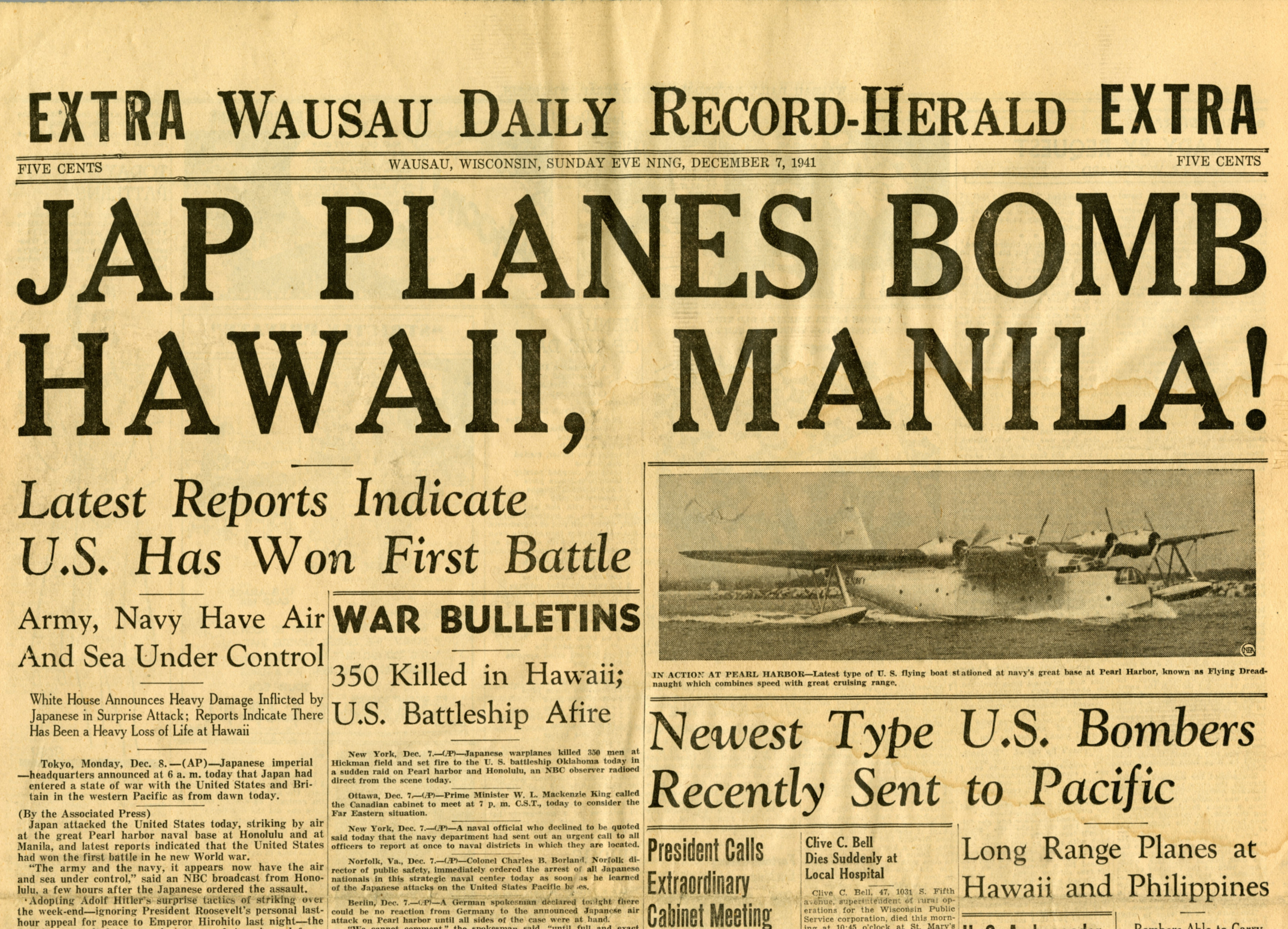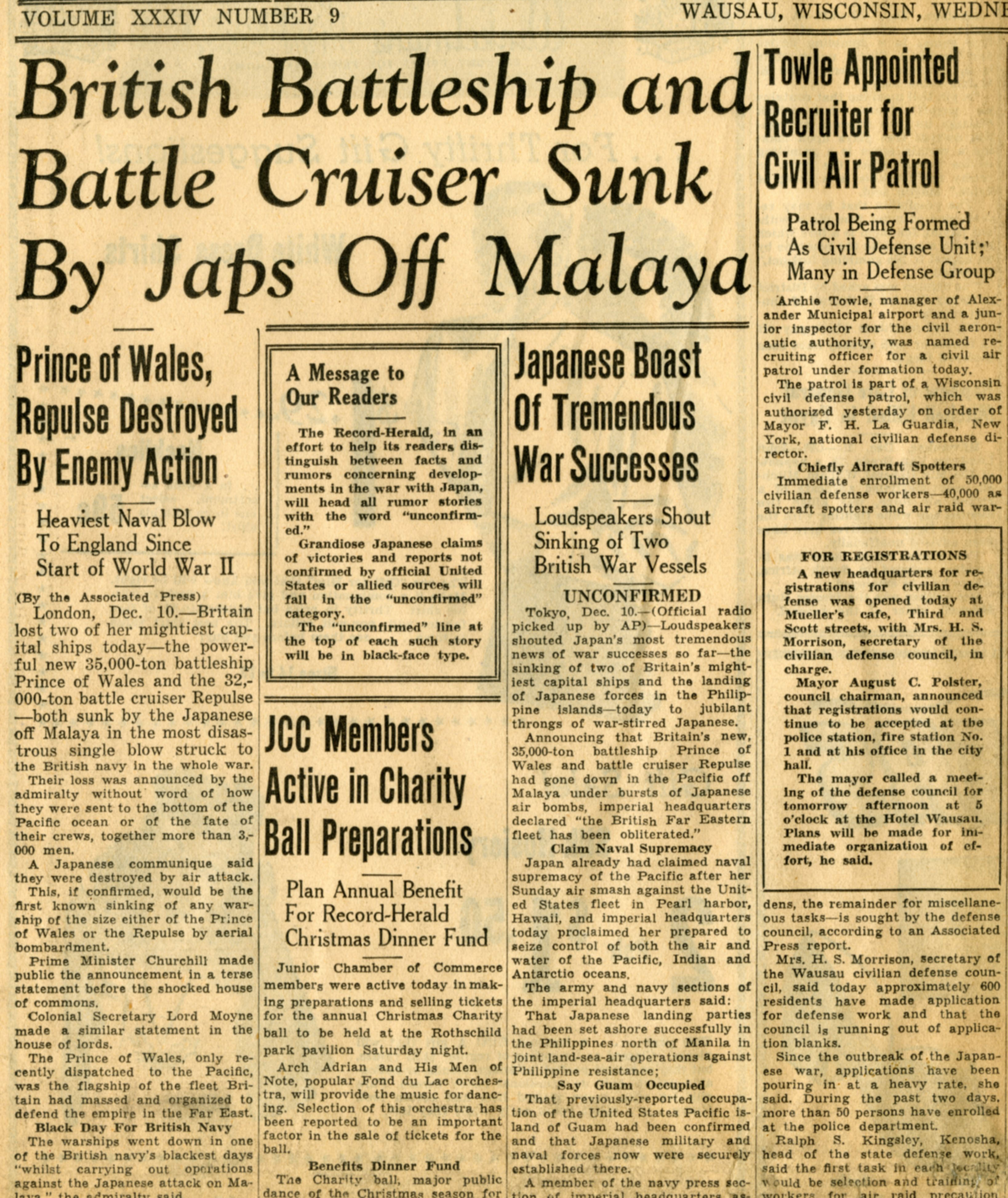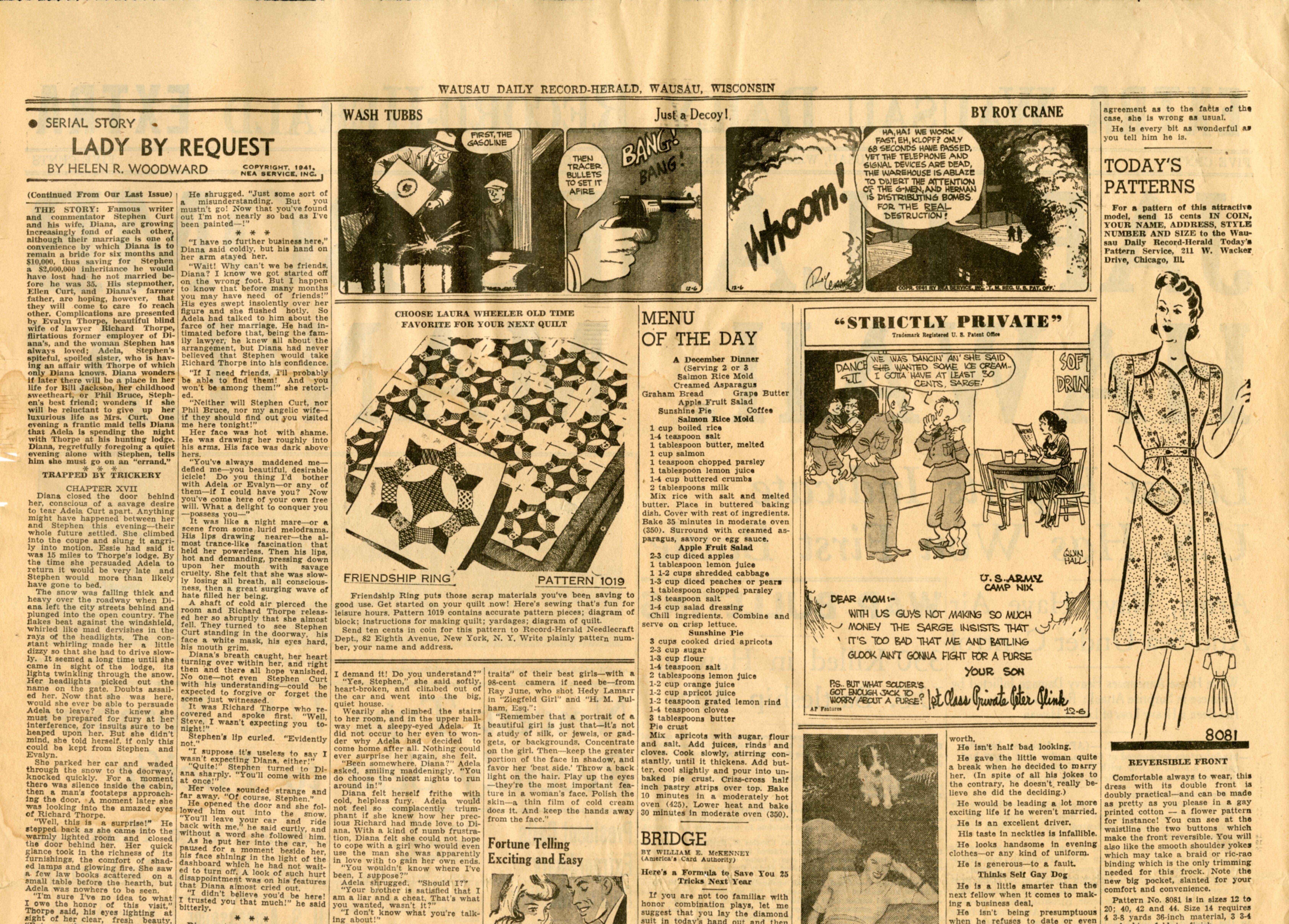Rereading the Local Headlines from Pearl Harbor

This week, on the 75th Anniversary of the Attack on Pearl Harbor, we were contacted by a local tv station (WZAW-TV) to see if we had a newspaper from December 7, 1941 and if we would be interviewed about it. The two minute segment that aired didn’t really give a lot of space to talk about the newspaper and what it said about the event and the reaction to said event from the people of Marathon County. So here is a brief look of that newspaper from December 7th, 1941 and a few thoughts on what the Pearl Harbor attacks meant to Marathon County.
Most of the United States would not have known about the events unfolding above Hawaii for many hours until after they were over. Despite the early morning start to the surprise attack, the difference in time zones combined with slow chains of communication available at the time meant that it was early afternoon by the time the news would have first reached Wisconsin.
There would have been radio broadcasts and many people had their Sunday afternoon radio interrupted with word of the attack (one of our volunteers remembers listening to a Packer game with his family when the news broke). But many people were not listening to the radio, and newspaper was the main source of information at the time in Central Wisconsin.

Unfortunately there wasn’t much information to be had. The Wausau Daily Herald Record had already sent their Sunday edition to be printed before news came in of the attack at Pearl Harbor. But with word of the events in the Pacific, they quickly put together a second, EXTRA edition to be distributed by the end of the day.
The fact that the attacks in Manilla (the capital of the Philippines) are included with the Hawaiian battle probably indicates the WDRH waited for a more complete picture before going to print. But overall the information provided simply states the attack occurred, reported what they could of the scope and devastation of the battles, and speculated on what the future might hold.
They tried to paint the event in as optimistic a light as possible, as indicated by the report that at least the American military still held the battlefield; the traditional indicator of the victor of a battle. In retrospect it is clear the Japanese never intended to seize Hawaii, and the pyrrhic losses on the U.S. Navy’s side hardly qualified as a victory.
If the late EXTRA edition of December 7th was an attempt to inform Marathon County readers of what was going on abroad, the issues published over the following few days give a better indication of how those readers reacted to that news.

The front pages of the Wausau Daily Record Herald over the next few days continued to be dedicated to reporting whatever news was available, although there was not a great deal of good news--it gradually became clear that the attack at Hawaii was part of a much wider Japanese offensive against American and Allied territory across the Pacific--and the Record-Herald was hesitant to reprint false information.
They added a disclaimer that they would include a bold-type "UNCONFIRMED" under the title of stories not certified by the White House or official press sources from Allied governments.
But you can also see the attempts by the citizens of Marathon County to find a way to contribute to the emerging national conflict and continue on with their lives. Under the disclaimer about confirmed reports, there is a piece about members of the Junior Chamber of Commerce selling tickets to the annual Charity Ball to support a Christmas diner fund. There is also reporting on local bodies being set up to start civil defense groups, such as aircraft spotters.

For me the most interesting thing about the newspapers reporting of the Pearl Harbor attacks is not on the front page, but inside the spread. Inside the cover of the first accounts of the moment that would pull the United States into a brutal, global conflict and you find a recipe for “Salmon Rice Mold,” “Apple Fruit Salad,” and “Sunshine Pie.” On the same page there are pictures of design patterns for dresses and quilts.
It would not surprise me if, on the afternoon of that infamous day in December of 1941, the editors at the Record Herald were forced to recycle a few generic military-themed cartoons and reprint chapter 17 from Helen R. Woodward’s serialized novel because they had so little information of value or use to print in the EXTRA edition.
It also sort of symbolizes the importance Pearl Harbor had on the people of Marathon County. Yes, was a terrible shock and signaled the start to a very long and difficult conflict that would transform much of their day to day lives. But at the same time, the narrative of Marathon County during the war was very much one of continuing on.
